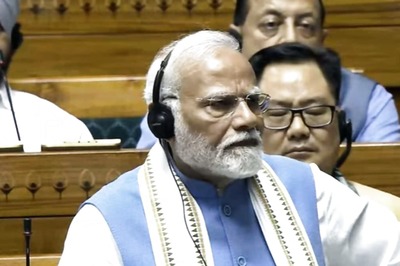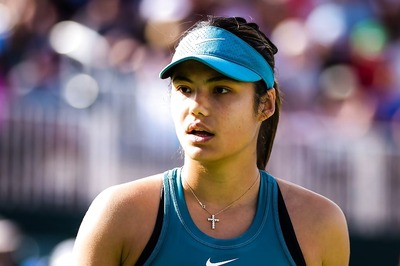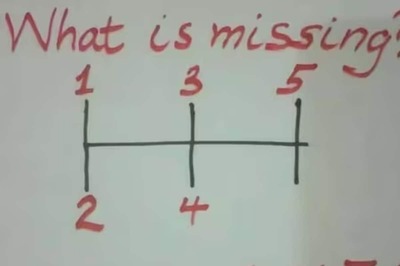
views
In Infra Vaani, noted urban infra expert Akhileshwar Sahay dissects infrastructural challenges of Indian cities and offers solutions. This week, he looks at Maximum City, Mumbai.
My romance with Bombay began in December 1985. Then a young railway probationer, every Saturday morning I alighted at Mumbai central station for my weekend sojourn in the Maximum City.
Once there, a stroll along the Marine Drive, watching the sunset at ‘Gateway of India’ from a boat, soaking in the pristine beauty of the ‘Queen’s Necklace’ in the night was the ultimate delight. The night ended with a leisurely walk on the golden sands of spotlessly clean Chowpatty. And, I fell in love with the city of dreams. No wonder, it was the crown jewel of the British Raj – the Urbs Prima in Indis.
In 1991, Bombay became my home when I landed at the Konkan Railway Corporation Limited (KRCL) head-office. Between 1993 and 1997, I would travel almost daily to Nariman Point-Cuffe Parade and return to C.B.D. Belapur – and had a frustrating battle with the congested Mumbai roads and the crush-load suburban-rail services.
Bombay became ‘Amchi Mumbai’ in 1995, but the name change did not rescue the city from any of its chronic problems. Mumbai has been my home for 15 years in the last three decades and I have watched this city literally going down the drain.
There are many layers to Mumbai’s journey to decay and decline, this piece captures some of more important reasons for that.
ALSO READ | Infra Vaani | Infra Woes are Chipping Away at India’s Silicon Valley, Bengaluru is Battling for Survival
Litany of Infra Woes
The glory of Mumbai is on the wane, even though Mumbai had a GDP of US $278 billion [US $606.625 billion on PPP terms] in 2021 with per capita PPP GDP being an impressive US $23,000.
Litany of woes of Mumbai are legion, but none worse than the fast-crumbling infrastructure services, which have endangered lives and livelihoods of 22.6 million people in this city. The cacophonous chorus of nine municipal corporations in the Mumbai Metropolitan Region (MMR), eight municipal councils and eight hundred villages without a unifying conductor of the orchestra makes matter worse.
First, the Maximum City despite the highest per capita income in the country is grossly inequitable. Geographically constrained, the city has grown haphazardly to far north, but the offices and commercial hubs are embedded at its southernmost tip. The rich enjoy the cosy comfort of South Mumbai, poor are condemned to northern-most tips or unliveable slums, bereft of basic amenities and liveable infrastructure.
Second, 50 per cent Mumbaikars live in slums with condition of the more recent unauthorised slums turning precarious by the day. Slum-dwellers get less than 50 lpcd (litres per person per day) water if they get at all. Without access to sewer lines, their untreated contaminated sewage flows directly into rivers and sea.
Worse is the situation of toilets. In a conversation with Ramon Magsaysay awardee Dr Jockin Arputham at his Dharavi home in 2000, he put before me a calculation on a paper on how an average Dharavi resident suffered 8-10 hours’ wait for a toilet seat.
Building of community toilets, pay and use toilets and the Swachh Bharat initiative should have lessened the burden but contrary is the truth.
Swachh Bharat norms mandate ‘1 toilet seat for 25 women or 30 men’. But studies, including one by Tata Institute of Social Sciences (TISS) in 2015, suggest alarming toilet ratio in slums: ‘1 seat for 150-200 people’. Worse, community toilets are mostly bereft of electricity and water. Also, there exists a toilet mafia of pay and use toilets, the poor annually pay around Rs 400 crore to use them.
Third, Mumbai is India’s solid waste capital. Its daily 11,000 metric tonne solid waste is one-third of what Maharashtra generates and 7.33 per cent of India’s daily 1,50,000 tonnes of solid waste.
Mumbai solid waste dumping sites – Deonar, Gorai, Mulund and Kanjurmarg (Gorai and Mulund closed) – are stinking landfills close to dense habitats. Mumbai spends Rs 8,000-10,000 crore for waste collection and transportation annually, making it a thriving business. Waste treatment, therefore, is no one’s baby.
Fourth, Mumbai is a classic cul-de-sac when it comes to city water supply. In the name of water shortages costly dams and water transportation lines have been constructed but the city is still unable to supply 24X7 water supply. Other parts of the urban agglomeration fare worse, there is a village next to Thane city that gets two hours water every fortnight. The state government’s mega plan of ‘water for all’ in Mumbai from May 1 may just turn out to be another hollow promise.
Fifth, the city sewage scenario sucks. One, 25 per cent of the city sewage from slums goes into water bodies untreated. Two, the city’s 133-year-old city sewage infrastructure is broken. Except the Colaba treatment plant, none of the other seven plants added between 1979 and 2003 are quantitatively or qualitatively insufficient: they together send daily 2,100 million litre partially treated sewage into rivers and sea. Three, the city sewage has high levels of Biochemical Oxygen Demand (BOD), Total Suspended Solid (TSS) and Faecal Coliform (FC), which can endanger the marine life as well as human life. Four, city suburbs hardly have any treatment plants; western suburbs (Bandra to Dahisar) with a 3.5 million population neither have proper sewage lines nor treatment plant. Five, the rebooting of seven treatment plants to meet Central Pollution Control Board norms at a cost of more than Rs 15,000 crore is running late by 15 years with completion nowhere in sight.
Sixth, Mumbai arguably a city with large public transport patronage is also curiously among the worst global cities for traffic congestion – it was fourth worst in 2021, as per a ranking.
Seventh, Mumbai, which saw global best practices being followed in public transport for a century, has in recent decades meekly surrendered to automobile-centric policy. In 1990s, Mumbai added 60-plus flyovers, and these helped only motorists. The trend has worsened ever since. In comparative time span, Seoul rejuvenated bus services and massively augmented metro rail systems, duly dismantling most of the city flyovers.
Eight, automobile-centric policy shift has resulted in alarming growth of cars and two-wheelers; the first million vehicles took two decades to enter Mumbai, the next million came in a decade, the third million in five years and the fourth even faster. Soon, Mumbai will be home to five million vehicles. Growing aspirations apart, alarming rise in vehicular population has resulted in 2,000 vehicles clogging per km of road, this includes 510 cars per km, the highest car density in India. Private vehicles occupy 75 per cent roads—the total length of Mumbai is 2,000 kms compared to Delhi’s 30,000 kms. As a result, public transport users, pedestrians and cyclists suffer.
Ninth, Mumbai roads are death traps. In 2014-19, road accidents increased by 150 per cent; potholes on Mumbai roads increased from 7,775 (2009-2014) to 19,957 (2014-2019), earning Mumbai the title of ‘Pothole Capital of India’.
Tenth, BEST-operated bus services, once on par with global best standards, are teetering on the edge. In 1993-94, BEST transported over 5 million commuters daily, more than the famed suburban railway. In 2000, when under tutelage of Dr. P.G. Patankar, I drafted the proposal to improve BEST Bus Services, I gave it a tagline: ‘EVEN BEST COULD BE BETTER’.
But gone are those days. BEST services have deteriorated, reliability has nosedived, average bus speed has slipped below 10 kmph and the coffers are empty, patronage too has reduced by half. This sorry state is solely attributable to Brihanmumbai Municipal Corporation (BMC), the owner of BEST and and Municipal BEST Committee, the apex decision-making body. When in 1947, BMC acquired BEST bus services, financing the acquisition through a bank loan, BEST bus services were among the global best. The BMC has destroyed Mumbai bus services ever since.
Instead of asking BEST bus services to become financially self-sustainable, only demand on it should be world-class bus operations, including with technology infusion, and bringing its past glory back. The required capital expenditure and subsidising the operating loss must come from the BMC, India’s richest municipal body. The city’s poor deserve to commute with dignity.
Eleventh, Mumbai suburban rail, for long the city’s lifeline, is past its prime now. The lifeline has been turned into a ‘life-crusher’. Nearly 8 million Mumbaikars daily spend four hours in cattle-class, unmindful of scorching heat and copious rains of Mumbai, almost hanging onto their lives through their journey. The Mumbai Urban Transport Project (MUTP) I, II and III aimed at reducing passenger per train have not yielded desired results. It is time for the suburban railways to either reinvent themselves or get booted out.
Twelfth, is metro rail systems a solution to Mumbaikars transport woes? I wish the guardians of Amchi Mumbai instead of doggedly pursuing solutions to fast-track automobile speed had taken up to Metro rail. On the contrary, they pursued everything else, including non-solutions like sky bus and toy train.
The story of metro rail in Mumbai is a sad one, mired in controversies, inept planning and shoddy implementation. British transport expert W.R. Davidge, in 1920s first conceptualised underground metro connecting CBD of Fort to Sion-Mahim with provision to extend further north in the suburbs.
I proudly carry an author-signed copy of ‘Underground Railway for Bombay – Some Thoughts by P. G. Patankar’. In early 1960s, Patankar at his own cost had painstakingly provided a comprehensive plan of five inter-connected underground Metro lines for Bombay, whose local trains and buses were already overburdened by a burgeoning population. When Patankar died at 88 in his Pune home in 2013, his dream of underground railway as definitive solution to Mumbai urban transport woes was still a pipe dream.
Mumbai Metro’s 11.6 km-long Line-1 on PPP mode (with Mumbai Metropolitan Region Development Authority holding 26 per cent) took six years for completion and its cost nearly doubled. In half that time, Delhi Metro Rail Corporation made 123-km Phase II operational. In 2022, the truncated portion – Line 2A and Line-7 (a total of 20 km) was opened after missing many deadlines.
The ambitious 35-km underground metro from SEEPZ to Cuffe Parade remains mired in controversies, while its completion cost has already seen an increase of Rs 10,000 crore.
MMRDA has planned 300-plus km long 14-line metro rail network – these are at various stages of planning and construction. But all is not well. Cost overruns, time overruns and uninspiring project implementation have hampered the mega plan. Most frustrating is the case of 11-km-long Navi Mumbai Metro Phase 1 project planned by CIDCO – I along with the DMRC team had passionately crafted its Detailed Project Report in 2008-2009 – whose construction was flagged with fanfare in 2011; 11 years later, the project is yet to be completed.
But will the 300-plus-km Metro proposed in Mumbai solve the urban transport chaos?
I am afraid not.
It is time to again look east – at Shanghai, the financial capital of China, whose 22.4 million population is comparable to Mumbai.
Shanghai was late to plan the metro rail construction, but today it has world’s largest operational network (802 km) with second-highest number of stations (396) and is globally the second-most patronised system. The way Mumbai is growing, nothing less than Shanghai will do. And the time is running out fast.
Thirteenth and last, the problem of annual heavy rain-induced Mumbai floods is getting worse each year. I got caught on Mumbai roads with record 346.2 mm of rainfall on August 23, 1997. That day, I had left my Mahalaxmi Essar House Office at 4 pm and reached our Lokhandwala home after 13 hours. Floods in Mumbai have become more common, more serious and more fatal since then.
There are reasons for the sorry state – 130-year-old drainage designed to survive only 25 mm rain per hour, closed drains, city geography and the Neap Tide effect when the difference between a high tide and a low tide is the least, restricting rainwater drainage into sea.
ALSO READ | Infra Vaani | How My Home Pune Lost the Smart City Tag, One Infra Blunder at a Time
Looking for the Silver Lining
But are there no solutions to Mumbai’s infrastructure woes? Even the worst infra problem can be solved to some extent if there is a will to act upon suggestions.
Money is Mumbai’s least of the problems. When in 1990s I was raising money to construct the Konkan Railway, more than 50 per cent of money came from Mumbai. Mumbaikars will find ways to fund their infrastructure.
And, none of the infra woes are unsolvable within a fixed time frame. If 745-km-long Konkan Railway Project with 91 tunnels and 300 major projects along the difficult terrain of Western Ghats could be completed in less than seven years using India money, engineers and contractors, any project can be executed within a stipulated cost and time. But it will need dedication, right leaders, a corruption-free and witch hunt-free environment. The nation has enough capable bureaucrats and technocrats and corporate CEOs with sterling integrity and proven track record who can end the infrastructure woes of Mumbai and resuscitate the city from the death bed.
Akhileshwar Sahay is a noted urban transport infrastructure expert and President, advisory services at BARSYL, a consulting firm. The views expressed in this article are those of the author and do not represent the stand of this publication or the company he works with.
Read all the Latest Opinions here




















Comments
0 comment